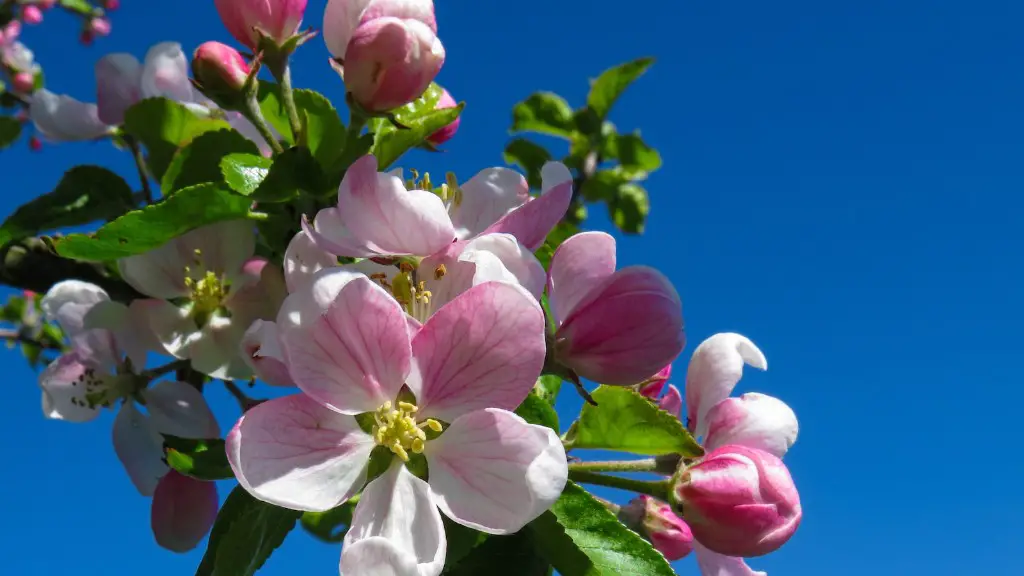The lemon tree is a common ornamental tree with a unique yellow color. It’s an attractive shade that’s often sought for landscaping projects. Unfortunately, some lemon trees become yellow due to nutrient deficiencies or pests. It is important to understand the underlying cause of yellowing so the proper steps to remedy the situation can be implemented. In this article, we’ll discuss the reasons why a lemon tree might turn yellow and what you can do to rectify it.
Nutrient Deficiencies
Lemon trees need certain nutrients for optimal growth and health. If these essential minerals are lacking, the tree’s leaves may become yellow. Common deficiencies include nitrogen, phosphorus, and iron. Yellowing is more likely to occur when a lemon tree is grown in soil that’s nutrient-poor. Applying a balanced fertilizer to the tree’s roots is likely to reverse the yellowing. However, always read the manufacturer’s instructions and use the recommended amounts, as overwatering or applying too many nutrients can harm the tree.
Pests and Diseases
In addition to nutrient deficiencies, pests and diseases can cause yellowing in a lemon tree. Insects such as aphids, mites, and whiteflies will feed on the tree’s leaves and cause yellow-splotched discoloration. If the tree is infected with a fungal disease, it can lead to the leaves turning yellow and falling off. To treat pest and disease damage, use an appropriate insecticide or fungicide. Additionally, ensure that the lemon tree is regularly pruned and watered to maintain its overall health.
Sunburn Damage
Another possible cause of yellowing in lemon trees is sunburn damage. Trees that are exposed to direct sunlight for extended periods can suffer from sunburn. This causes the leaves to become discolored, leading to yellowing. To prevent this, make sure that the lemon tree is in a spot with partial shade and is not directly exposed to the midday sun. Additionally, consider adding a nearby structure, such as an awning, to help create more shade.
Lack of Water
Lack of water can also lead to yellowing of a lemon tree. When the soil is dry, the roots of the tree won’t be able to absorb enough water to keep the leaves healthy. To rectify this, make sure your lemon tree is getting regular waterings, especially during hot and dry summer months. Additionally, consider installing a drip irrigation system or creating a small water catchment system to ensure the lemon tree is getting the proper amount of water.
Managing Nutrient Deficiencies
If a soil test reveals that your lemon tree is suffering from nutrient deficiencies, you can rectify it with an appropriate fertilizer. Choose a fertilizer specifically formulated for citrus trees and follow the package instructions for amount and application. Additionally, consider adding organic compost to the soil around the base of the tree. Compost can help boost water retention and the availability of beneficial nutrients.
Improving Soil Quality
It is also important to improve the soil quality to ensure your lemon tree stays healthy. While occasional soil amendments can help, investing in a soil-testing kit is essential to gain an in-depth understanding of the soil’s nutrient profile. Use the results to create an appropriate fertilizer regimen to restore mineral balances and pH levels. Additionally, make sure that the soil has good drainage and is free of weeds and other debris.
Preventing Pest Infestations
Pest infestations on a lemon tree can cause irreparable damage and make the tree less resilient. To prevent pests from attacking the tree, inspect it regularly and remove any pests that you find. If a pest infestation has already occurred, switch to an appropriate insecticide or fungicide and follow the label instructions. It is also important to maintain the tree’s overall health by pruning and watering regularly. Make sure the soil around the tree’s base is free of weeds and grass clippings.
Disease Management
If your lemon tree is exhibiting symptoms of a fungal disease, it is essential to take swift action to remedy the situation. Start by pruning off diseased branches, twigs, and leaves. Wear gloves and a face mask while handling the affected parts of the tree. Additionally, use a fungicide according to the manufacturer’s instructions and apply a balanced fertilizer to boost the tree’s overall health.
Watering and Fertilizing
Regular watering and fertilizing are important for a healthy lemon tree. The tree should be watered at least once a week and fertilized with a balanced fertilizer at least twice each year. Make sure to follow the manufacturer’s instructions for application. Additionally, mulching with organic material such as grass clippings or compost can help improve the fertility of the soil and boost the tree’s overall health.
Pruning and Staking
Pruning is an essential component of lemon tree maintenance. It helps maintain the tree’s shape and stimulates new growth. Prune the tree at least once a year, cutting off diseased and dead branches, and removing any crossing or overhanging branches. Staking the tree can also help ensure that it remains upright and does not become damaged in high winds. Use metal stakes, and make sure they are firmly in the ground.
Light and Humidity
Lemon trees should be planted in a spot that gets plenty of light. A minimum of six hours of sunlight per day is ideal for optimal growth. Additionally, make sure the humidity levels are not too high or too low, as this can cause yellowing of the leaves. Use a humidifier to keep the humidity at a comfortable level.
Controlling Weeds
Weeds can compete with a lemon tree for water and nutrients, hindering its growth and potentially leading to yellowing of the leaves. To prevent weed growth, cover the soil around the tree’s base with a thick layer of mulch. Additionally, inspect the ground near the tree regularly and hand-pull any weeds that you find.


